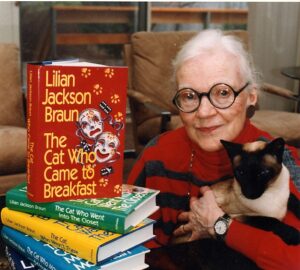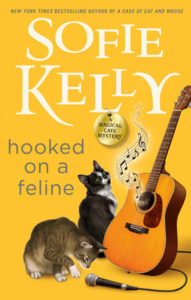Julia Buckley: A Dark and Stormy Murder
Book 1 of 5 in the Writer’s Apprentice series
 Lena London has found her dream job: assistant to her all-time favorite romantic suspense writer Camilla Graham. Offered an interview upon graduation, Lena is immediately hired by Camilla and she and her cat Lestrade move into Graham House in Blue Lake, IN. Lena can’t believe her luck. She and Camilla bond almost instantly and Lena begins helping her edit/coauthor her newest book. The beautiful house is a dream home located on a hill overlooking eponymous lake in Blue Lake, filled with German Shepherds (Heathcliff and Rochester, of course), a cook, and a secret room. The town itself is quaint and friendly and Lena starts to make friends and settle into her dream career.
Lena London has found her dream job: assistant to her all-time favorite romantic suspense writer Camilla Graham. Offered an interview upon graduation, Lena is immediately hired by Camilla and she and her cat Lestrade move into Graham House in Blue Lake, IN. Lena can’t believe her luck. She and Camilla bond almost instantly and Lena begins helping her edit/coauthor her newest book. The beautiful house is a dream home located on a hill overlooking eponymous lake in Blue Lake, filled with German Shepherds (Heathcliff and Rochester, of course), a cook, and a secret room. The town itself is quaint and friendly and Lena starts to make friends and settle into her dream career.








